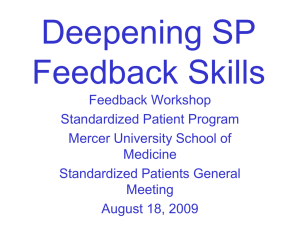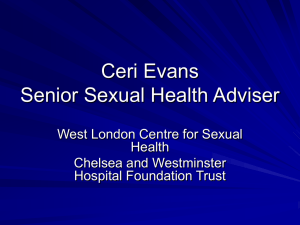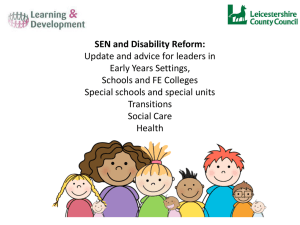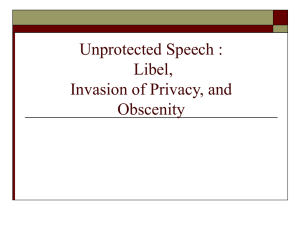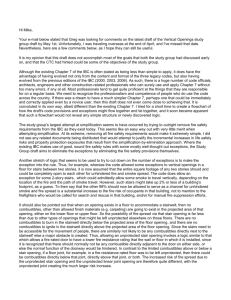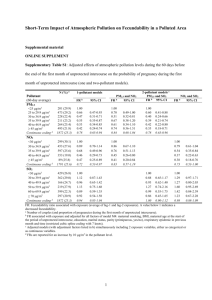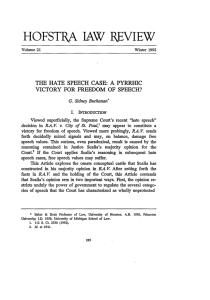Unprotected Speech
advertisement
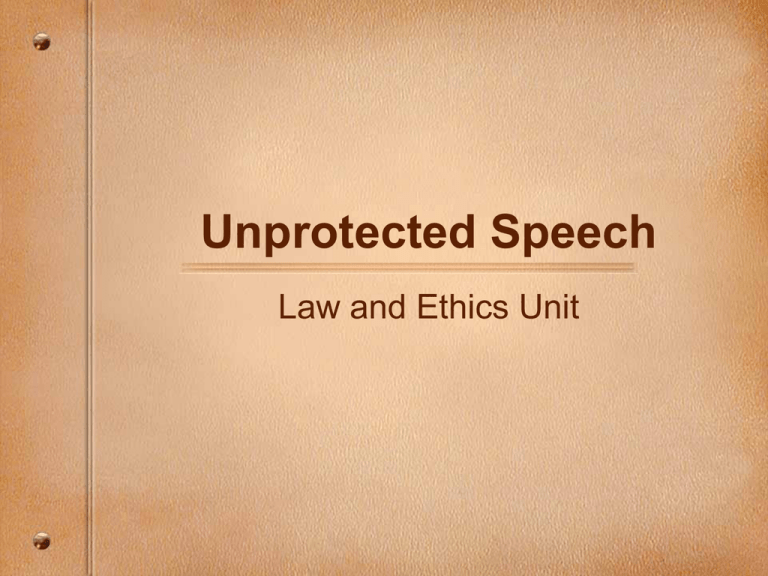
Unprotected Speech Law and Ethics Unit Freedom of Speech • Congress shall make no law respecting an establishment of religion, or prohibiting the free exercise thereof; or abridging the freedom of speech, or of the press; or the right of the people peaceably to assemble, and to petition the Government for a redress of grievances. Freedom of Speech • But it does have some restrictions…. • If it is underlined. YOU MUST WRITE IT. It probably is on the test! :) 1st area • Obscenity- Expression must meet a three-part obscenity test established in 1973 The Miller Test • 1st part: Would it be considered morbid by the community (not national)? • 2nd part: Is sexual misconduct clearly depicted in an offensive way? • 3rd part: Whether the work, taken as a whole, lacks serious literary and/or artistic, political, or scientific value. 2nd area of Unprotected Speech • Defamation-Injury from published communication (libel) or spoken words (slander) • To win a defamation suit must claim all 4 parts of PIHF The PIHF Checklist • Publication-・A statement is "published" if it is communicated to someone other than the person whom the statement is about. The PIHF Checklist • Identification Where you successfully omit or alter a subject's identity, they cannot successfully sue you for libel. • Every story should clearly state what facts have been altered. The PIHF Checklist • HARM A statement is harmful if it seriously shames, ridicules, disgraces or injures a person's reputation or causes others to do so. Statements that are mildly embarrassing or merely confusing or inaccurate will not meet the "harm" test. The PIHF Checklist • Statements that associate someone with a vile disease. • Statements that accuse someone of illegal behavior. • Statements that hurt someone's livelihood. • Statements that allege racial or religious bigotry. The PIHF Checklist • FAULT In order to be "at fault" in publishing a statement, the person suing must prove that the reporter either did something they should not have done or that they failed to do something that they should have done The PIHF Checklist • People suing for libel who are either public officials or public figures will often have to prove a higher level of fault than an ordinary person. The PIHF Checklist • Who is a Public Official? a public official appears to the public to have a substantial responsibility for or control over governmental affairs. THE PIHF Checklist • Who is a Public Figure? There are two categories: (1) General Purpose Public Figure: a "celebrity," whose pervasive fame or notoriety has made his or her name a "household word." (2) Limited Purpose Public Figure: someone who has voluntarily assumed a leading role in a particular public controversy. The PIHF Checklist • In most states, a private person need only prove that a reporter was negligent, that is, that the reporter made a mistake - perhaps an innocent one - that a "reasonable" reporter should not have made. 3rd area of Unprotected Speech • Expression intended and likely to incite imminent lawless action – Examples: Instigating a riot – Shouting Fire in a crowded theater 4th area of Unprotected Speech • Fighting words are written or spoken words, generally expressed to incite hatred or violence and to place the targets of the words in danger of harm 5th area of Unprotected Speech • Unwarranted Invasions of Privacy • (a) public disclosure of private and embarrassing facts • (b) improper newsgathering • ( c) false light---unflattering/saying someone is something they’re not • (d) unauthorized use of a person 6th area of Unprotected Speech • Deceptive or Misleading Advertisements • False Advertising • Small Print or Not ever having item available 7th area of Unprotected Speech • Clear and immediate threats to national security • Example: troop movements during wartime 8th area of Unprotected Speech • Copyright Violations • Using without proper fair use 9th area of Unprotected Speech • Expression on school grounds that causes a substantial disruption • TINKER!
